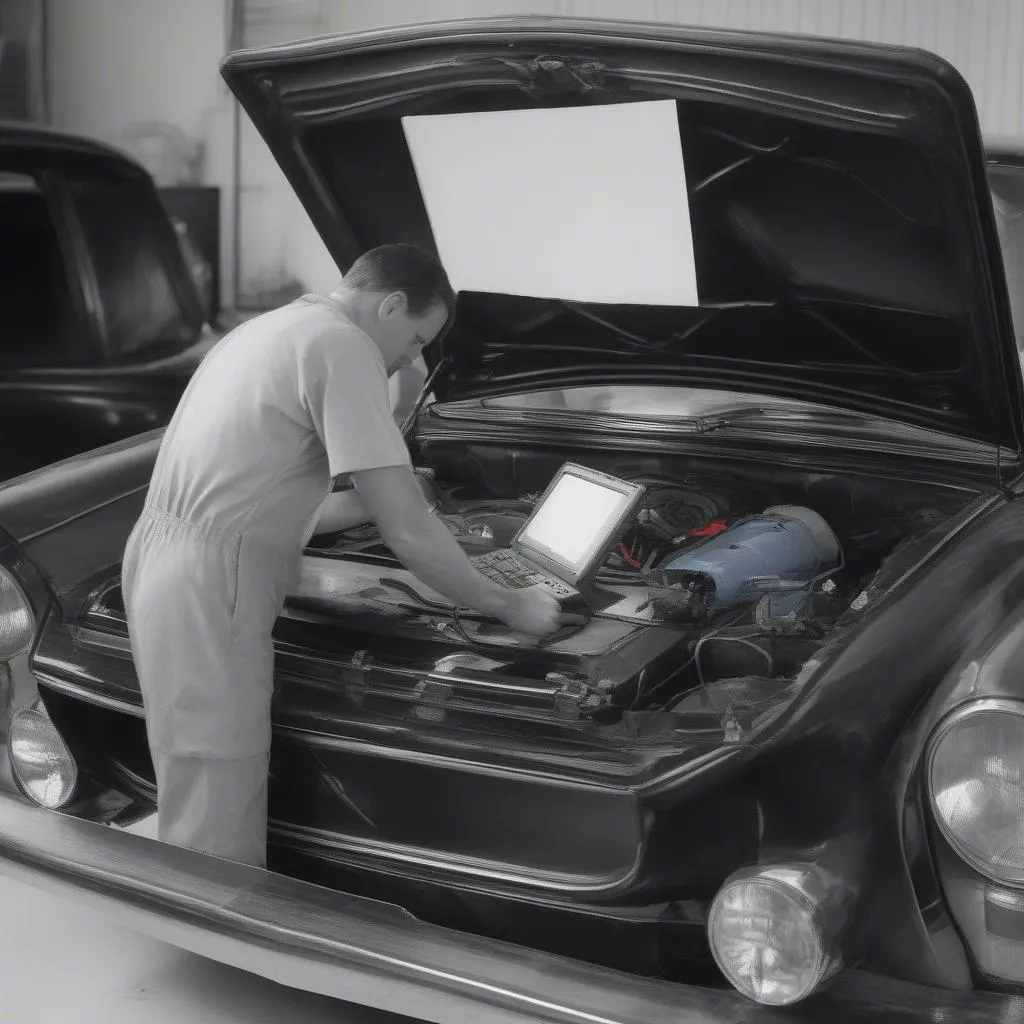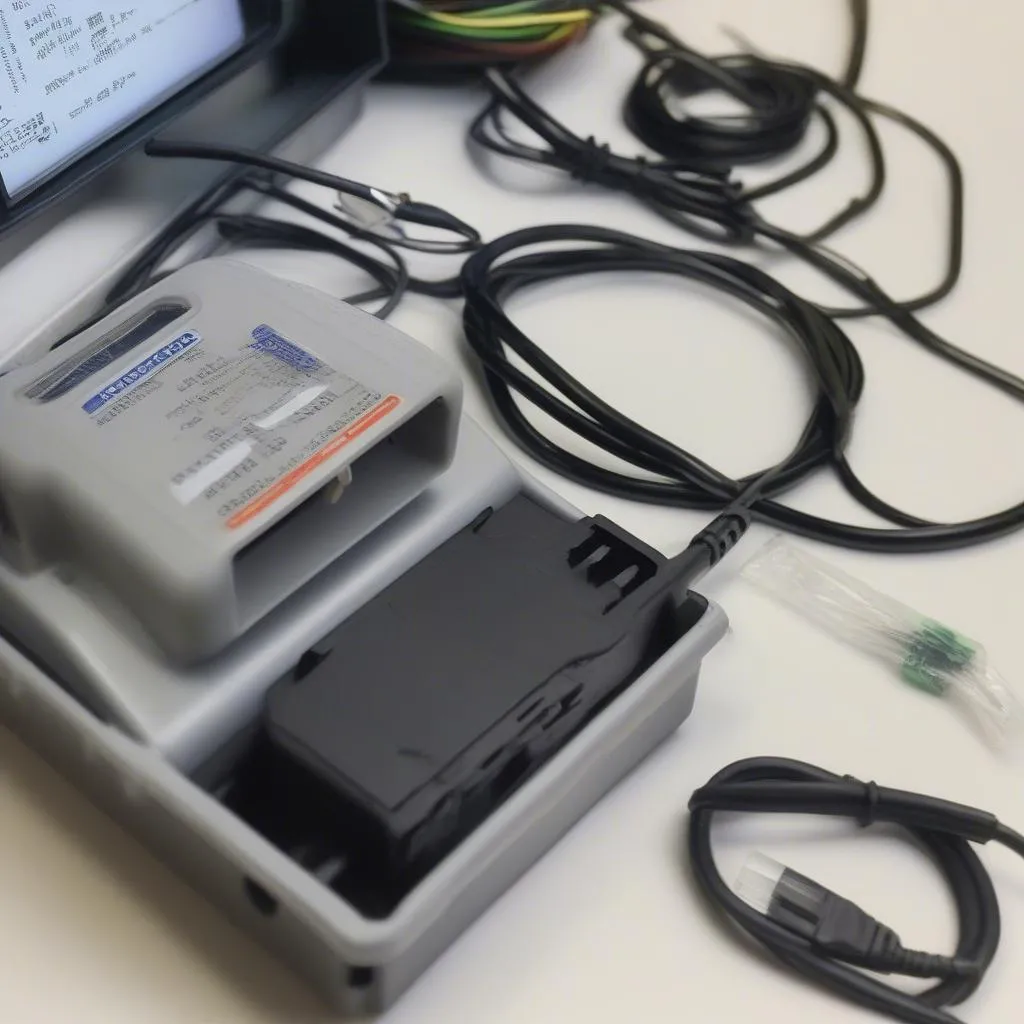Imagine this: You’re driving down a highway, enjoying the open road, when suddenly your car sputters and starts to lose power. You pull over to the side of the road, frantically searching for the source of the problem. You wish there was a way to quickly check your car’s diagnostic codes and get an idea of what’s going on. This is where OBD-II technology comes in.
OBD-II (On-Board Diagnostics II) is a standardized system for monitoring and reporting on a vehicle’s emissions and performance. Cars manufactured after 1996 in the US are required to be equipped with OBD-II. However, many older vehicles lack this feature. If you own an older car, you might be wondering, “Can I add OBD-II to my old car?” The answer is: Yes! Adding OBD-II to an older car can be a valuable investment, offering numerous benefits.
Why Add OBD-II to an Old Car?
Adding OBD-II to an older car has several advantages:
1. Enhanced Diagnostics and Troubleshooting:
- Improved Diagnostic Capabilities: OBD-II provides access to a wealth of diagnostic data, including engine codes, sensor readings, and system performance metrics. This information can be invaluable when trying to diagnose problems and troubleshoot issues.
- Faster Problem Identification: With OBD-II, you can quickly identify potential issues with your car’s engine, transmission, or other systems. This can save you time and money by allowing you to address problems before they become major repairs.
2. Increased Safety and Reliability:
- Early Warning System: OBD-II can alert you to potential safety issues before they become serious problems. For example, it can warn you of a faulty sensor or a potential engine malfunction.
- Improved Emissions: By monitoring emissions levels, OBD-II helps ensure that your car is running efficiently and cleanly, reducing harmful emissions into the environment.
3. Enhanced Performance and Efficiency:
- Optimized Performance: OBD-II can help tune your engine for optimal performance by providing data on fuel consumption, engine load, and other key parameters.
- Fuel Savings: By monitoring your car’s fuel efficiency, OBD-II can help you optimize your driving habits and potentially save money on fuel costs.
How to Add OBD-II to an Old Car
There are two primary ways to add OBD-II to an older vehicle:
1. Using a Retrofit Kit
- OBD-II Retrofit Kits: These kits are designed to convert your car’s existing wiring to OBD-II standards. The kit typically includes a wiring harness, a connector, and a diagnostic port.
- Installation: The installation process can vary depending on the make and model of your vehicle. You might need to consult a service manual or seek assistance from a professional mechanic.
- Compatibility: Ensure that the retrofit kit is compatible with your specific vehicle model.
2. Using an Aftermarket OBD-II Scanner
- Aftermarket Scanners: These devices are available in various formats, from basic scanners to advanced, multi-function models.
- OBD-II Port Integration: Some aftermarket scanners can be directly plugged into the diagnostic port, while others may require a connector or adapter.
- Features: Aftermarket scanners offer various features, such as reading diagnostic codes, displaying sensor readings, and providing performance data.
Adding OBD-II to a Classic Car: A Case Study
Take the example of a 1967 Chevrolet Camaro. This classic muscle car, while visually stunning, often lacks modern safety and diagnostic features. Adding OBD-II to this car would be an excellent way to modernize it. A dedicated OBD-II retrofit kit would allow you to monitor its systems and potentially improve its performance.
Frequently Asked Questions
What are the best aftermarket OBD-II scanners for older cars?
- ELM327: The ELM327 is a popular and affordable Bluetooth OBD-II scanner that is compatible with a wide range of vehicles. It’s easy to use and can be paired with a smartphone app for accessing data.
- Autel MaxiScan MS300: This scanner offers more advanced features than the ELM327, including live data readings, fault code definitions, and graphing capabilities.
- Foxwell NT510: This scanner provides an even wider range of diagnostic and repair features, including ABS, SRS, and transmission diagnostics.
How can I find the correct OBD-II retrofit kit for my car?
- Online Research: Several online retailers sell OBD-II retrofit kits. You can search for kits specifically designed for your car model and year.
- Mechanic Recommendations: Ask a qualified mechanic for recommendations on reputable brands and kits that are compatible with your vehicle.
Can I install the retrofit kit myself?
- Professional Installation: If you’re not comfortable working with electrical systems, it’s recommended that you have the kit installed by a qualified mechanic.
- DIY Installation: If you have some mechanical experience, you can attempt to install the kit yourself. Consult your car’s service manual or online resources for instructions.
Do I need to update my car’s ECU to use OBD-II?
- ECU Compatibility: In most cases, you won’t need to update your car’s ECU to use OBD-II.
- Consult a Mechanic: It’s a good idea to consult with a mechanic to confirm compatibility with your specific vehicle model.
Adding OBD-II to Your Old Car: A Modern Upgrade
Adding OBD-II to your older car can provide you with valuable information and make it easier to diagnose and troubleshoot problems. It can also help you keep your car running smoothly and efficiently for many years to come. Whether you’re a classic car enthusiast or simply want to keep your old car running well, OBD-II can be a valuable addition.
 OBD-II scanner for classic car
OBD-II scanner for classic car
Get in Touch!
If you’re looking for help with installing OBD-II in your older car or need assistance with diagnostics, please feel free to reach out! We have a team of experienced technicians who can help you get your car running smoothly. You can reach us via Whatsapp at +84767531508.
 OBD-II retrofit kit for older cars
OBD-II retrofit kit for older cars
Explore More:
- Ford Contour OBD Codes: https://techcarusa.com/ford-contour-obd-codes/
- Best Bluetooth OBD-2 for Car: https://techcarusa.com/best-bluetooth-obd-2-for-car/
- BMW Ride-On Car: https://techcarusa.com/bmw-ride-on-car/
- Cruise Control OBD: https://techcarusa.com/cruise-control-obd/
- KW830 OBD-II EOBD Directions: https://techcarusa.com/kw830-obd-ii-eobd-directions/
Do you have any further questions about adding OBD-II to an older car? Let us know in the comments below!